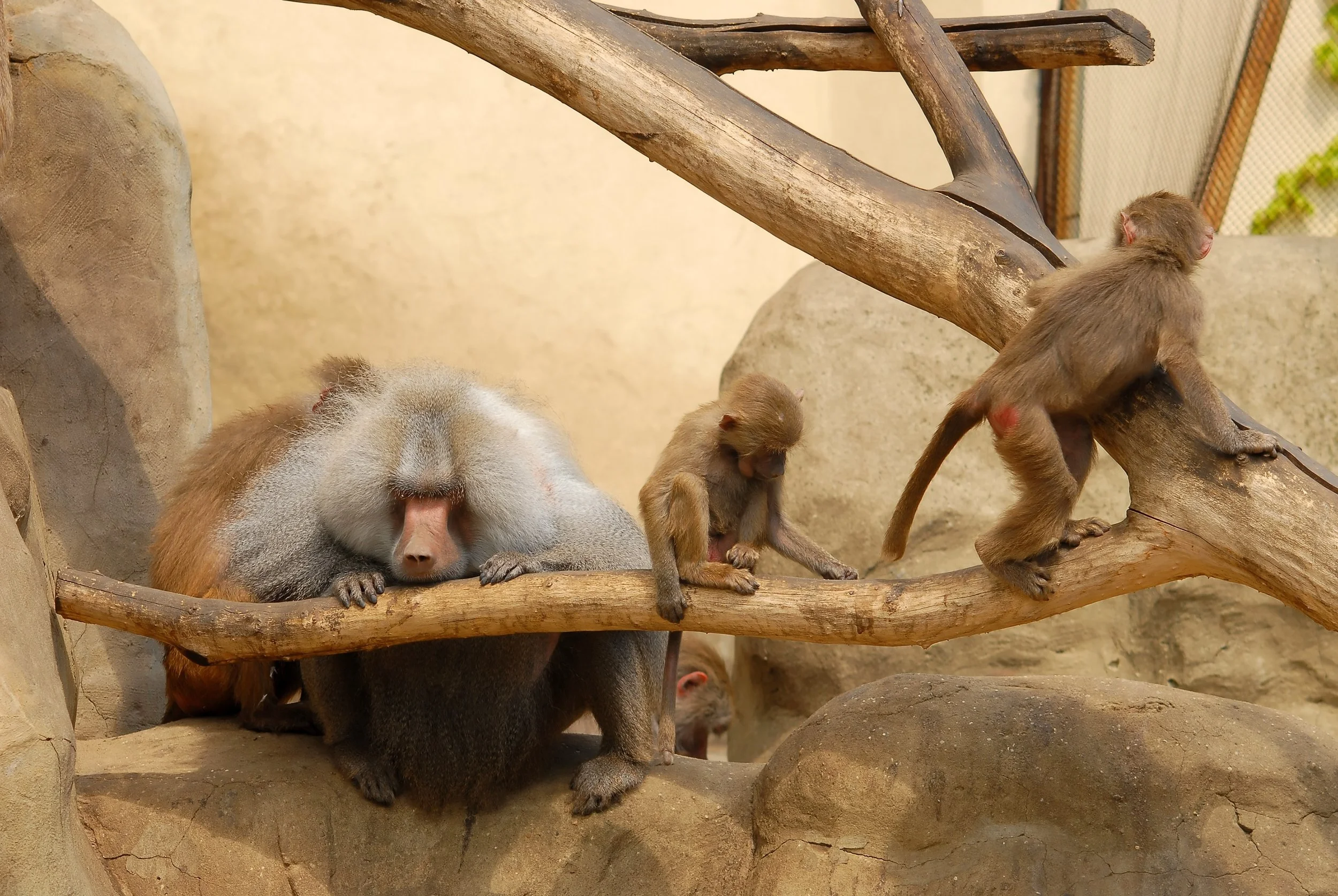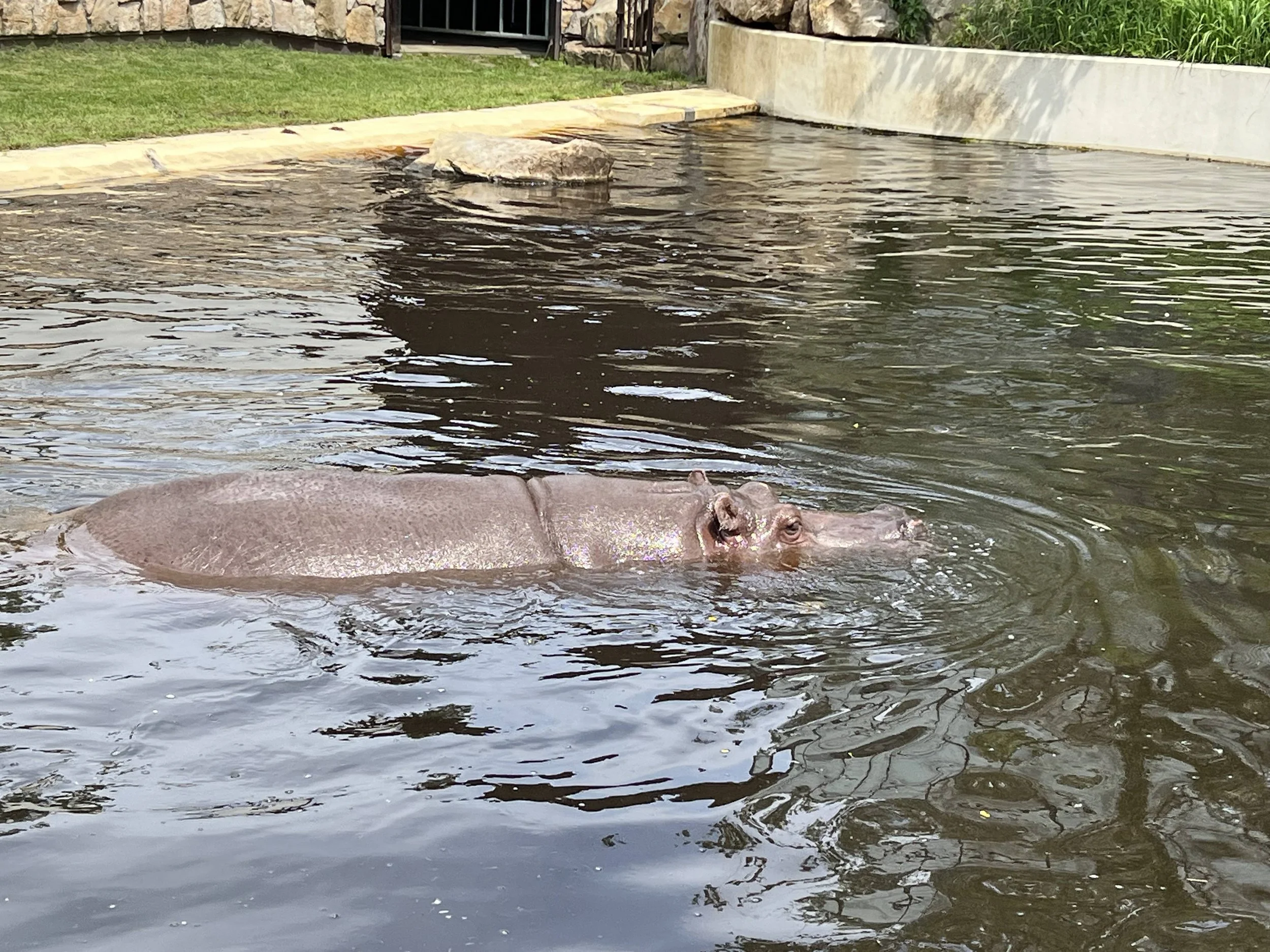Visiting The Warsaw Zoo Poland
Gorilla
This post may contain affiliate links, which means I may receive a small commission, at no extra cost to you, if you make a purchase through a link. This helps me keep the Sick Girl Travels blog running while providing you with high-quality product recommendations and great travel deals. Please see my full disclosure for further information. Thanks for your support!
Warsaw Zoological Garden, The Biggest Zoo In Poland
The Warsaw Zoological Gardens is a fantastic zoo with a storied history. Visiting the Warsaw Zoo in Poland isn’t just about seeing the over 11,000 animals representing more than 500 species, it’s about exploring a bit of World War 2 history. The zoo sees over 700,000 people visit annually and is widely regarded as the best zoo in Poland. Whether you’re an animal lover or a history buff, I highly recommend making a trip to the city zoological garden in Warsaw a part of your Warsaw itinerary.
African Spoonbill
Warsaw Zoo History
While the current zoo officially opened its doors on March 11, 1928, its roots can be traced back to the private menageries of the 17th century. King John III Sobieski kept one of the most impressive menageries at Wilanów Palace. In the 19th century, several private zoos opened within the city of Warsaw and were open to the public.
In 1926 M. Pagowski opened a small zoo on Koszykowa Street which later moved to a 110,000 sq foot space on Maja Avenue in 1927. The same year construction on a Municipal Zoological Garden began. Wenanty Burdzinski, the former director and founder of the Kyiv Zoo was appointed as director of the new zoo. Many of the zoo's animals were purchased from M Pagowski, with others donated by the Pedagogical Museum. This new Warsaw Zoo contained lions, tigers, and a female Indian elephant named Kasia.
Upon Burdzinski’s death from pneumonia in 1928, Jan Zabinski was appointed director of the Warsaw Zoo. Zabinski oversaw the growth of the zoo leading up to World War II including the addition of a monkey house, an elephant house, enclosures for antelopes, a seal pond, and a giraffe barn. Zabinski remained director of the zoo until 1939. He was later re-appointed as director in 1949 and continued to serve until 1951.
The Zookeeper’s Wife
Sadly, with the events of WWII, the zoo was bombed regularly in September 1939, resulting in the death of many of its animals.
After the surrender of Warsaw to the Germans, most of the animal species deemed valuable in the eyes of German representative Lutz Heck were taken to a reserve in Germany. Others deemed less valuable were killed in a hunting spree on New Year’s Eve of 1940. The zoo was then closed.
During World War II, director, Jan Żabiński, along with his wife Antonina and their son Ryszard, saved more than 300 Jews from the Holocaust by hiding them in their villa located within the zoo. After the zoo’s closure by the Germans, Zabinski turned the zoo grounds into a pig farm. That allowed him to enter the Warsaw Ghetto on the pretext of gathering scraps for his pigs, something that allowed him to help the Jews who were hidden there in secret.
Jan Zabinski was seriously injured during the 1944 Warsaw Uprising and even taken prisoner. When he later returned, he worked to slowly reintroduce animals to the zoo, which reopened its doors in 1949.
Monkey at the Warsaw Zoo
Both Jan and Antonina were honored in 1965 as “Righteous Among the Nations” by the Yad Vashem Holocaust Memorial in Jerusalem.
In 2007, American writer Diane Ackerman published her book The Zookeeper's Wife, which tells the story of the Zabinski family activities during World War II and the Warsaw Zoo survivors. The book draws upon Antonina Zabinska's diary.
The book was made into a movie in 2017 starring Jessica Chastain portraying Antonina and Belgian actor Johan Heldenbergh portraying the zoo’s director, Jan.
The Warsaw Zoo Today
Today you can still see the Zabinski villa within the Warsaw Zoo. You can also see the almost 100-acre zoo complete with an African elephant house, a hippopotamus, the largest single fish tank in Poland, an ape house, polar bear, lions, cheetahs, seals, brown bear, and more.
The zoo is an accredited member of the European Association of Zoos and Aquaria (EAZA) and the World Association of Zoos and Aquariums (WAZA)
The Warsaw Zoo cooperates with other Zoos and science institutions all over the world. They also fight for endangered species using animal breeding, science studies, and ecological education. In addition, they run Birds' Asylum and CITES Centre to help rescue injured animals.
The zoo also helps animals until they are able to get back to their natural environment and hopes that one-day zoological gardens will be useless and needless. Until that day, they participate in a myriad of conservation efforts.
A lioness at the Warsaw Zoo
Is the Warsaw Zoo Wheelchair Accessible
The Warsaw Zoo is, for the most part, wheelchair accessible. However, there are several old buildings with heavy doors and some stairs, such as the reptile enclosure and chimp enclosure that are not accessible.
Entrance is free for disabled people.
There is also signage in the Braille alphabet.
Polar Bear
Warsaw Zoo Poland Exhibits
With so many animals, it’s impossible to list every species. But highlights of the Warsaw Zoo include piranhas, penguins, giraffes, elephants, gorillas, chimpanzees, a polar bear, hippopotami, rhinoceros, parrots, flamingoes, cheetahs, alpacas, and a wide variety of reptiles.
African Elephant
Warsaw Zoo Conservation Efforts
The Warsaw Zoo leads the way in conservation efforts when it comes to European zoos. Together with the help of the Foundation for the Reconstitution of the Auroch, they have established a gene bank for endangered species. In 2014, they launched the CITES Center supporting the global conservation of endangered species. They also run the Bird Asylum, which takes in more than 3,000 patients every year.
They also participate in a number of educational efforts including teaching students internationally, running international conferences, and training municipal police on how to intervene on behalf of injured animals.
Baboons
Warsaw Zoo Tickets
From April to September tickets are $8.50 US for adults and $6 for children over 3, students, and seniors. Children under 3 are .25 USD. From October to March tickets are $6 USD for adults and $4.80 for children over 3, students, and seniors. Children under 3 are .25 USD.
The prices can’t be beat!
Cheetahs
Where is The Warsaw Zoo Located?
The Warsaw Zoo is located in the Praga District of Warsaw at Ratuszowa 1/3, 03-461 Warsaw, Poland. The easiest way to get there is by taxi, which is very inexpensive. To book a wheelchair-accessible Warsaw taxi, you can reach EkoTaxi online or at +48 22 644 22 22.
Hippopotamus
Warsaw Zoo Hours
The Zoo is open every day, including Sundays and holidays.
The Zoo is open from 9.00 a.m. to:
3:30 p.m. (December, January) and 4:00 p.m. on Saturdays and holidays,
4:00 p.m. (February, November),
5:00 p.m. (March, October),
6:00 p.m. (April-September) and 7:00 on Saturdays and holidays (May-September).
An Alpaca
I Hope You Enjoy Your Trip To The Warsaw Zoo
I really hope you consider visiting the Warsaw Zoo. This Polish Zoo is not only important in the world of animal conservation but an important historical site. It’s beautiful, well-kept, and has a wide variety of animals. It’s also an incredibly inexpensive way to spend the day and fun for the whole family.
Have you visited this Poland zoo? Drop a comment below. I’d love to hear your thoughts.




















